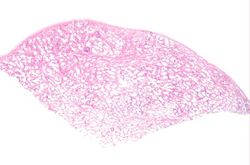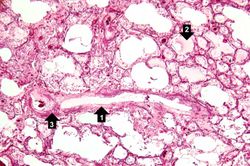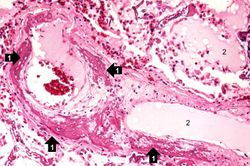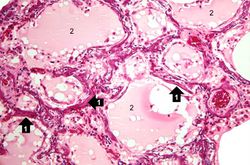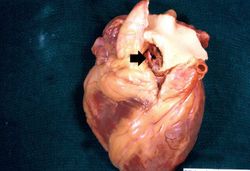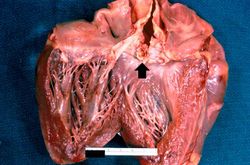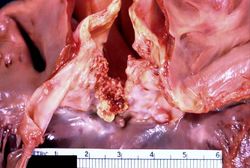Difference between revisions of "IPLab:Lab 2:Metastatic Calcification"
Seung Park (talk | contribs) |
Seung Park (talk | contribs) (→Images) |
||
| Line 39: | Line 39: | ||
=== Images === | === Images === | ||
| − | * [ | + | * [{{SERVER}}/library/index.php?/tags/1450-metastatic_calcification PEIR Digital Library: Metastatic Calcification Images] |
* [http://library.med.utah.edu/WebPath/LUNGHTML/LUNGIDX.html WebPath: Pulmonary Pathology] | * [http://library.med.utah.edu/WebPath/LUNGHTML/LUNGIDX.html WebPath: Pulmonary Pathology] | ||
Revision as of 01:24, 30 August 2013
Contents
Clinical Summary[edit]
This 47-year-old woman diagnosed with metastatic carcinoma of the breast was also found to have severe hypercalcemia. She developed metastatic calcification which was most prominent in the kidneys and lungs.
Autopsy Findings[edit]
In addition to the metastatic breast cancer, important gross findings at autopsy included lungs that were gritty and firm and which weighed 1330 grams. The patient's parathyroid glands were normal (two parathyroid hormone assays during life were normal).
Images[edit]
A higher-power photomicrograph shows a blood vessel cut in longitudinal section (1). Several of the alveoli are filled with a pink-staining proteinaceous fluid (2) indicative of pulmonary edema. The alveolar septa and the wall of the blood vessel have a purplish color due to massive deposition of mineral (primarily calcium) in these tissues (3).
A closer view of this same aortic valve (arrow) illustrates the nodularity and thickening of this valve. This valve would be extremely stiff and almost entirely immobile. This particular example of dystrophic calcification is associated with a degenerative change of the aortic valve due to an unknown cause.
Study Questions[edit]
Additional Resources[edit]
Reference[edit]
- eMedicine Medical Library: Hypercalcemia
- Merck Manual: Breast Cancer
- Merck Manual: Hypercalcemia
- National Cancer Institute: Breast Cancer
Journal Articles[edit]
- Ullmer E, Borer H, Sandoz P, Mayr M, Dalquen P, Solèr M. Diffuse pulmonary nodular infiltrates in a renal transplant recipient. Metastatic pulmonary calcification. Chest 2001 Oct;120(4):1394-8.
Images[edit]
| |||||
Hypercalcemia is the state of having increased levels of calcium in the blood.
The deposition of calcium in normal tissues as a result of elevations in blood calcium.
A normal pair of lungs weighs 825 grams (range: 685 to 1050 grams).
Pulmonary edema refers to the accumulation of fluid in the pulmonary alveolar and tissue spaces as a result of changes in capillary permeability and/or increases in capillary hydrostatic pressure.
A normal alkaline phosphatase is 39 to 117 U/L.

